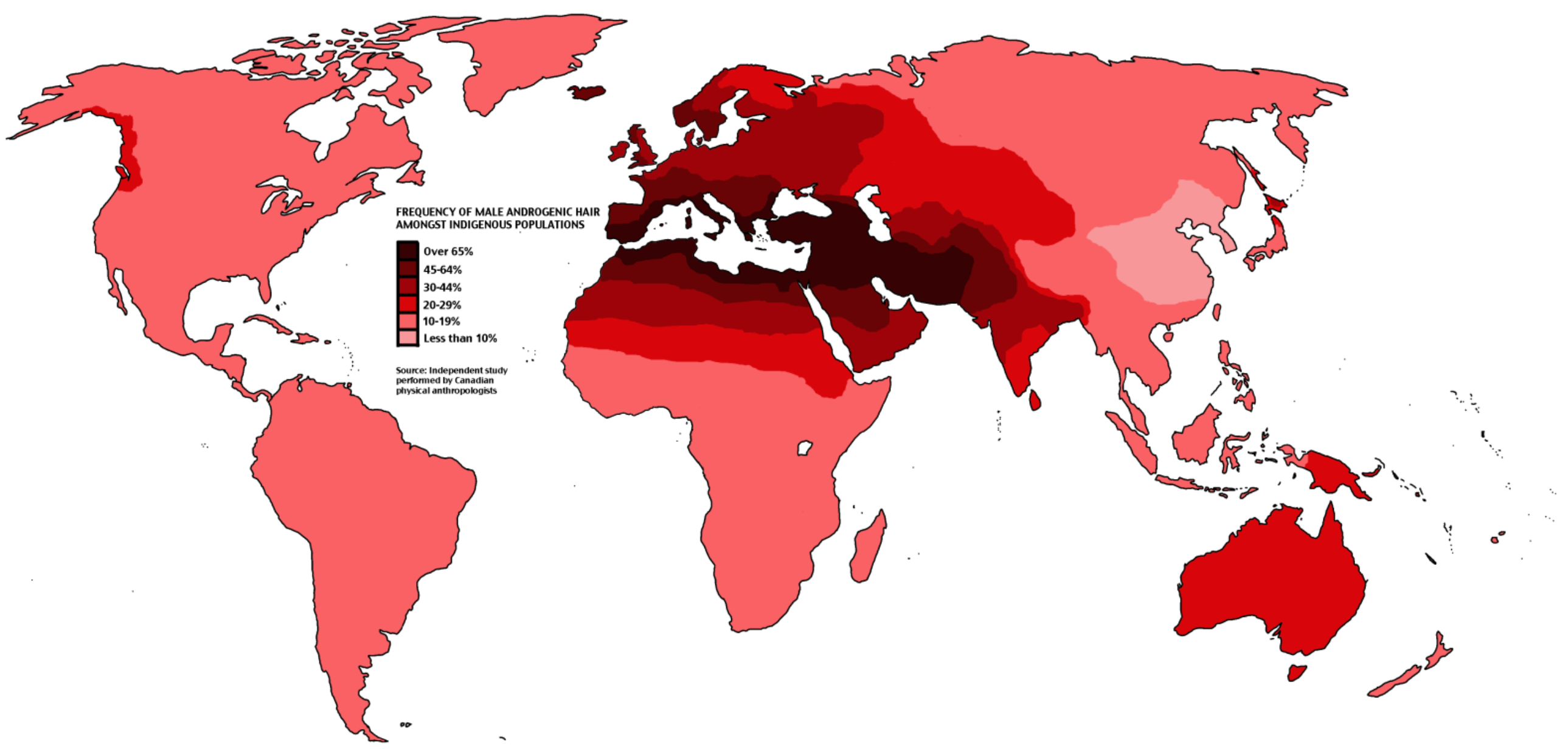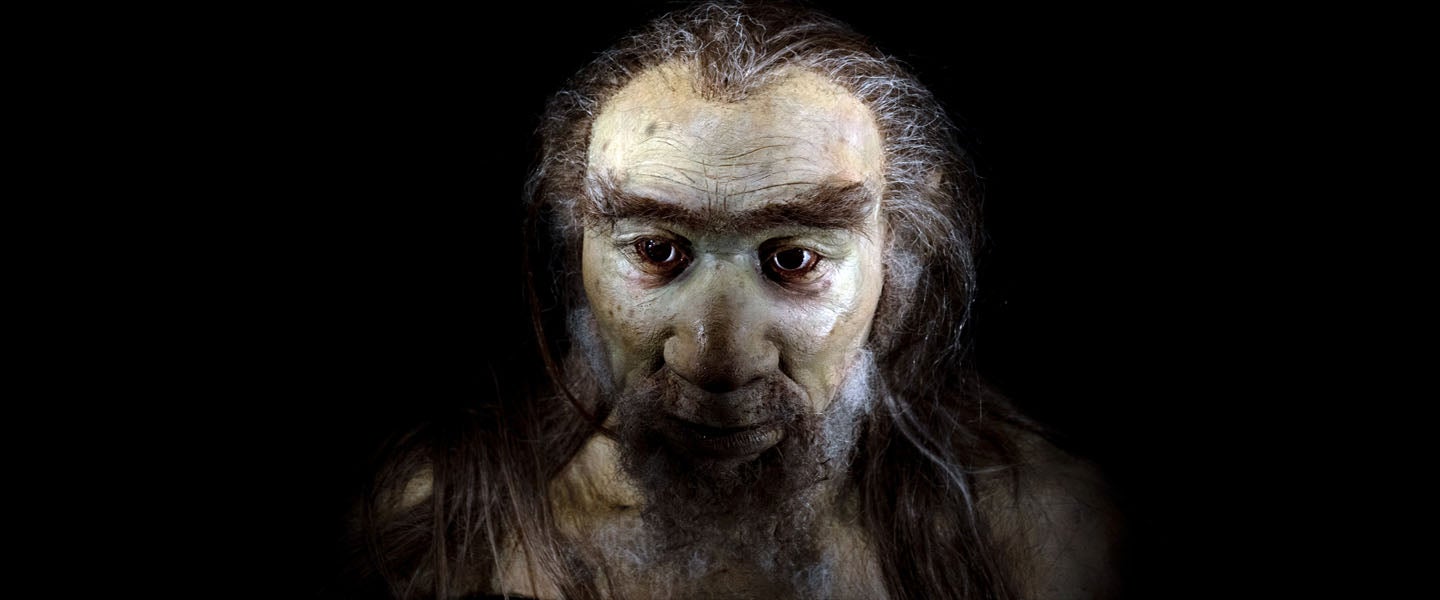From what we know, prehistoric man had a lot to contend with, including throwing down with saber-toothed cats and dealing with the occasional ice age. But what about male-pattern baldness? Did ancient furry dudes with shiny domes spend their downtime hunting down just the right wolverine pelt for a toupée? While it’s not an exact science, by looking at the ethnic and genetic makeup of male-pattern baldness sufferers, as well as the migration patterns of ancient man, we can get a pretty good idea.
We’ll possibly never know for sure if male-pattern baldness was a problem for cavemen because most of them kicked the bucket long before their 30s, which is when it would really start to become noticeable (see my photo below this article for an example). As The Virility Paradox author Charles Ryan explains, “These people were dying of infections and trauma in their 20s, so they didn’t live to the ripe old age of 45.”
What we do know is that male-pattern baldness originated somewhere in Europe or the Middle East. Ryan explains that there are genetic markers for male-pattern baldness that are found in Europeans, but not in Asians or Africans, which means that these genes originated after humans migrated to Europe some 40,000 years ago. Also, if you look at a map of how male-pattern baldness affects native populations around the world, it’s pretty clear where things started.

As we all learned from the X-Men movies, evolution comes about by mutation. So, back in prehistoric Europe or the Middle East, the first guy with the gene for male-pattern baldness was born, got busy with some hot cave women and spread the genes to his progeny. Now, as Ryan pointed out, this guy was likely dead before his underwhelming mutant ability even showed up, so the genes behind male-pattern baldness persisted even before men started going bald.
But a shortened lifespan wasn’t the only factor allowing men to keep their hair, as their testosterone level may also have been a factor. Ryan, who is an oncology professor, began looking into testosterone’s link to prostate cancer, researching the history of testosterone levels for his book. He explains that male-pattern baldness is linked to an excess of testosterone in the skin and scalp. “While we normally think of testosterone as a good thing, there are some drawbacks to having an excess of testosterone, and that can be increased risk for prostate cancer and male-pattern baldness,” Ryan says.
Ryan goes on to explain that back in caveman times, men didn’t have all this extra testosterone because they had a much more stressful lifestyle, fighting off diseases and trying to dodge the bottom of incoming mastodon feet. Because of that stress, their bodies created more cortisol, which in turn lowered their testosterone levels. “In a way, this excess of testosterone is a byproduct of our success,” Ryan says. “If I were to bet, I’d say they had less male-pattern baldness than we do now.”
The stresses of prehistoric life may also have contributed to the persistence of baldness in yet another way. As humans moved northward from Africa, our lifestyles got even more difficult: It not only got colder, but we actually suffered from a shortage of men due to the perils of having to hunt so much, especially through the frigid winters when women couldn’t gather. With the women now outnumbering the men, men got to be more choosy about which mate they selected. As anthropologist Peter Frost explains in his blog, this led to variations in appearance that came about due to “sexual selection,” i.e., when physical features exist in one sex in order to attract the other (think a peacock’s feathers, or your partner’s extra perky butt). This explains why so many variations in hair color and eye color all originate from Europe: Everywhere else, most people have black hair, but in the more choosy environs of the freezing North, mutations like blonde hair and red hair became attractive out of sheer novelty.
On the male side, though, European men didn’t have to work too hard on their own appearance, as they were the ones in demand. Because of this, they may have gone through a period of “relaxation of selection,” meaning their genes didn’t have to compete too hard to persist. This is in contrast to places like Africa, where the population was more even and thus mating rituals were a little more balanced.
Despite the fact that the cons of losing your hair definitely outweigh the pros, there may be some evolutionary advantage to male-pattern baldness. When our ancestors lost all their body hair, it gave us a huge leg up in our evolution: As Michael P. Masters, a professor of biological anthropology, explains, “Reduced body hair gave us a selective advantage in hunting, which combined with sweating and vasodilation, allowed us to out-persist our prey. In this way we likely stalked large prey animals, pursued them on foot with our more efficient bipedal form of locomotion and then, after they overheated and stopped, our Homo erectus ancestors caught up with them and killed them.”
There are other advantages to that prematurely aged noggin, too. “The idea is that age is a valuable commodity in a small band of humans, because if you’ve reached old age, you’ve probably learned some survival skills,” explains Michael Cunningham, who teaches evolutionary psychology at the University of Louisville. In other words, a bald dome made one look older and wiser, which made their knowledge valuable, which meant other people would work that much harder to keep them around. Additionally, the loss of hair also made these dudes less threatening to younger men who were competing for mates, as the baldness was a symbol of a more advanced age — like, you know, 30.
But of course, there are bald black men and bald Asian men, too. If male-pattern baldness is a European thing, how can there be any non-Europeans with this affliction? Ryans explains that there are a few reasons behind this, one being that many of us have more racially mixed backgrounds than we thought. “Also, there are multiple genes that contribute to variation on actual appearance, which means that you can’t reduce one trait down to a single gene,” Ryan says. So while male-pattern baldness presents much more in Europeans due to a few identified genetic markers, there are other contributors to this condition that can provide similar results.
This also explains why some of our closest relatives in the animal kingdom suffer from hair loss. Chimps, for example, can even suffer from complete hairlessness in some cases, but it’s not in the classic male-pattern baldness pattern, which suggests this is not evolved from the same genetic source. Instead, it’s what’s known as “parallel evolution,” which is when things evolve along a similar path, but separately — for example, both birds and bats have wings, but they have no common ancestor with wings.
Macaques also go bald, but these little monkeys are further away from us genetically, and their hair loss may be related to hair-pulling. Since it happens in both males and females, we can assume it’s genetically different. But gorillas and orangutans — our closest relatives after chimps — generally don’t suffer from hair loss on their heads, says biological anthropologist and primate expert Amanda Korstjens.
There are obviously exceptions, like this bald-headed silverback gorilla named Kadogo. But this ape is notable because he’s possibly the only ape who’s bald on the top of his head. Still, as that first bald-headed European proved so many millennia ago, if this handsome bald fellow proves popular with the ladies, he could pass on the mutation to his kids. Then, in a few thousand years, some curious gorilla with a laptop and a receding hairline may investigate why it is so many of his fellow apes are also going bald.

